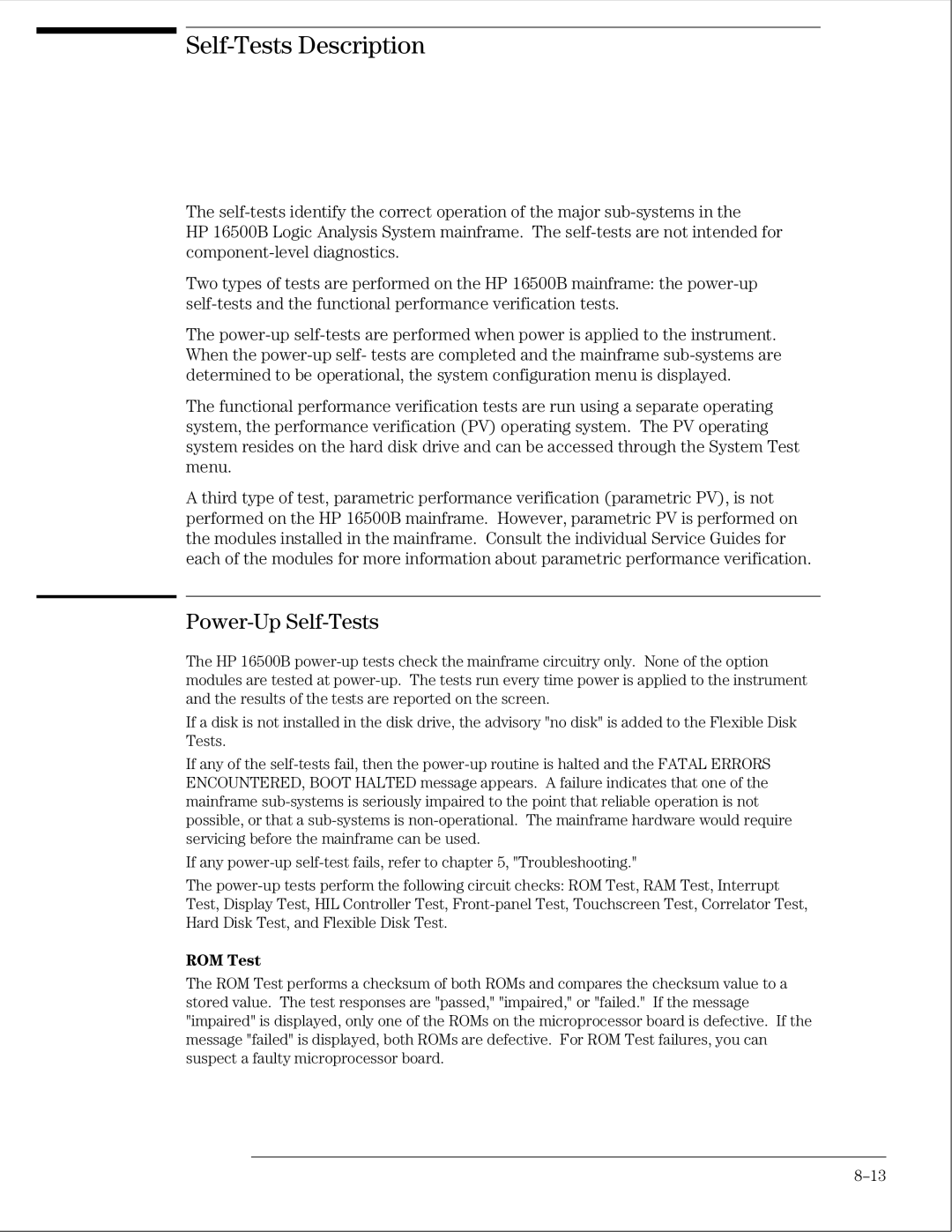
Self-Tests Description
The
HP 16500B Logic Analysis System mainframe. The
Two types of tests are performed on the HP 16500B mainframe: the
The
The functional performance verification tests are run using a separate operating system, the performance verification (PV) operating system. The PV operating system resides on the hard disk drive and can be accessed through the System Test menu.
A third type of test, parametric performance verification (parametric PV), is not performed on the HP 16500B mainframe. However, parametric PV is performed on the modules installed in the mainframe. Consult the individual Service Guides for each of the modules for more information about parametric performance verification.
Power-Up Self-Tests
The HP 16500B
If a disk is not installed in the disk drive, the advisory "no disk" is added to the Flexible Disk Tests.
If any of the
If any
The
ROM Test
The ROM Test performs a checksum of both ROMs and compares the checksum value to a stored value. The test responses are "passed," "impaired," or "failed." If the message "impaired" is displayed, only one of the ROMs on the microprocessor board is defective. If the message "failed" is displayed, both ROMs are defective. For ROM Test failures, you can suspect a faulty microprocessor board.
